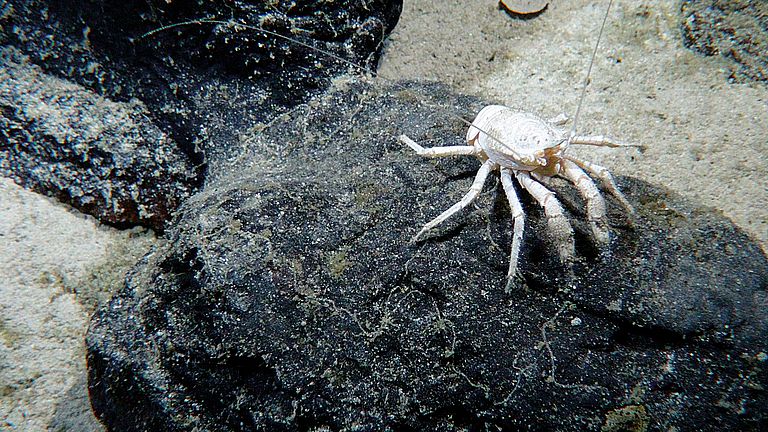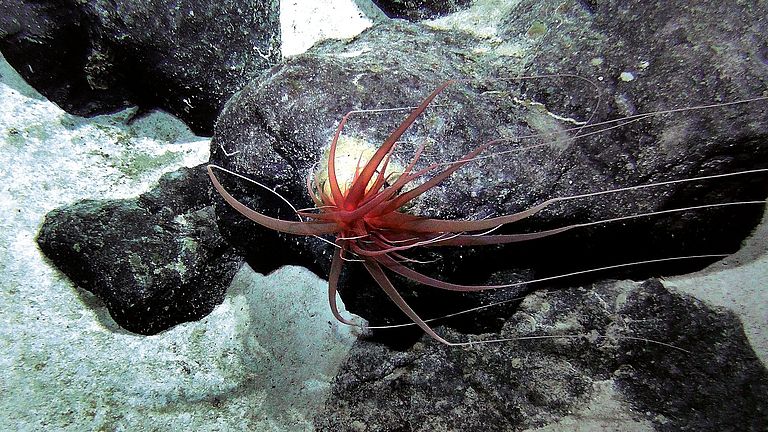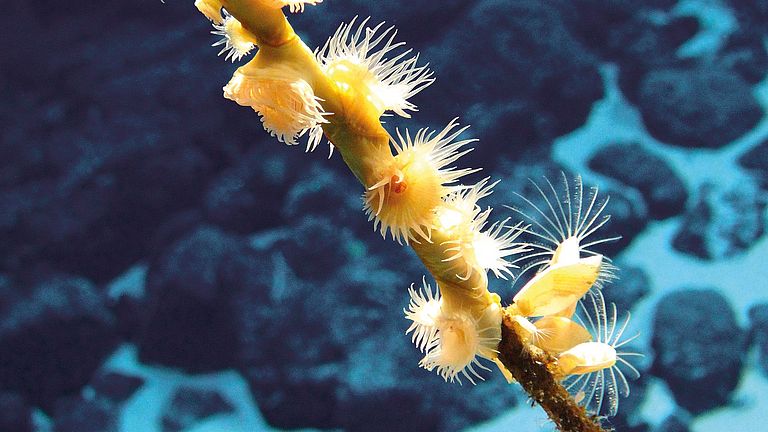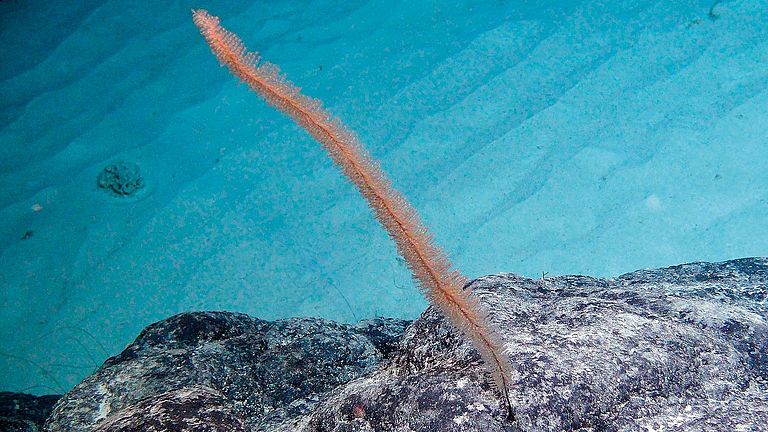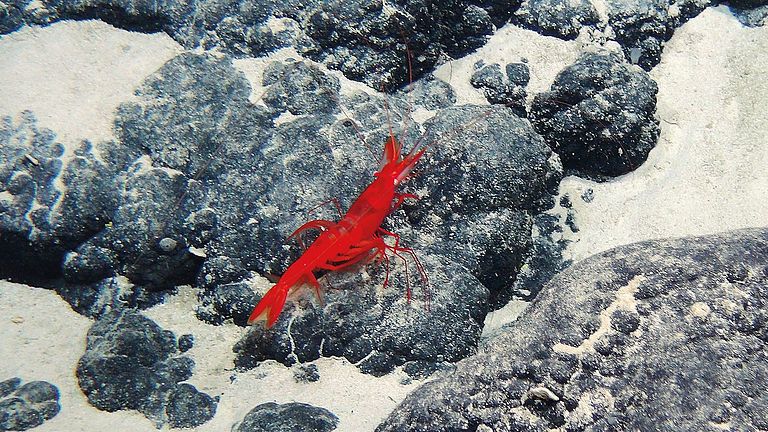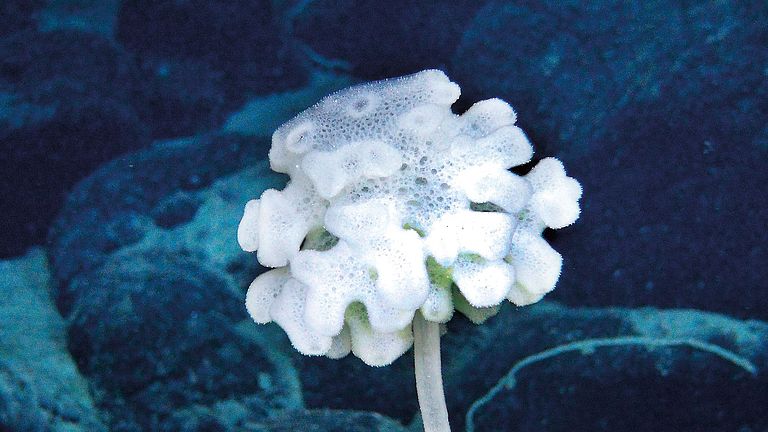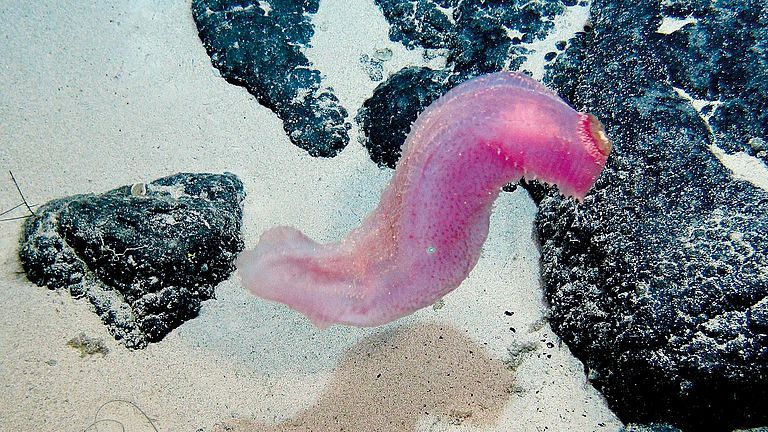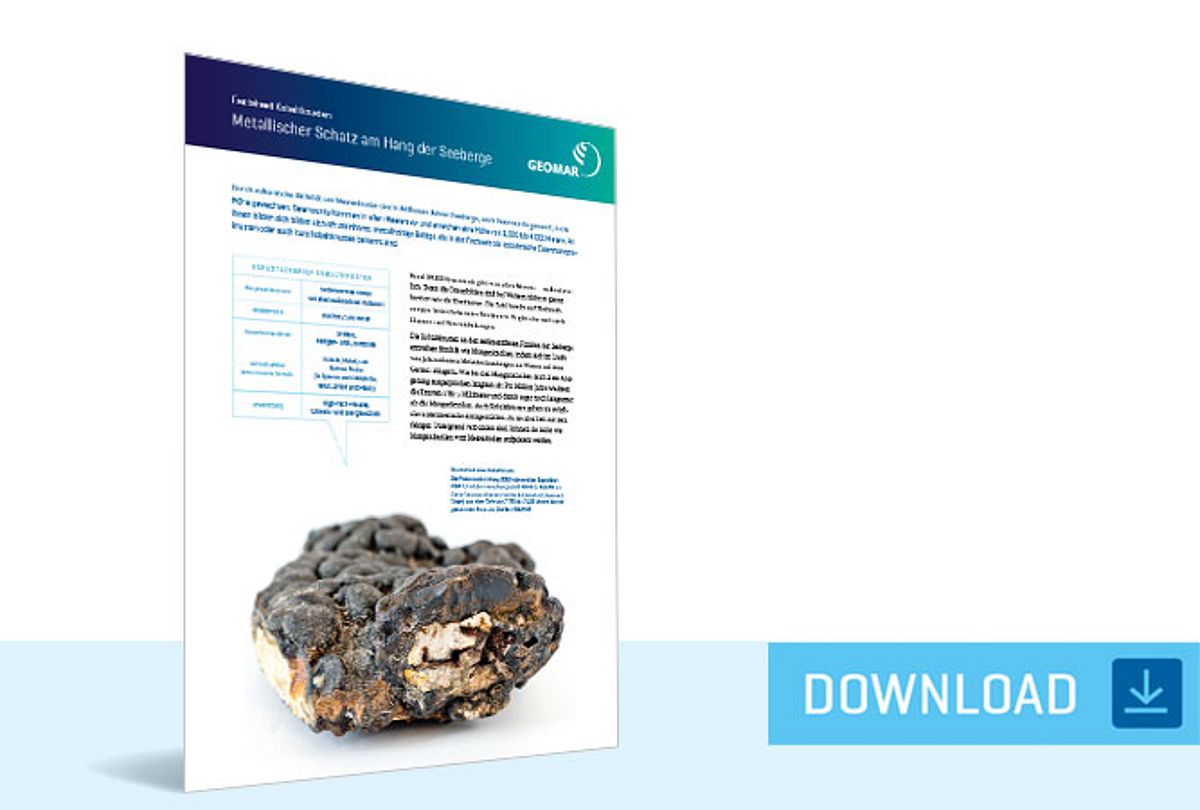GEOMAR Helmholtz Centre for Ocean Research Kiel
Communication and Media
Fon 0431 600-2807
Mail media(at)geomar.de
Biodiversity at Seamounts
Underwater seamounts provide habitats for numerous organisms in the deep sea. Diverse ecosystems, which are scientifically mostly not understood, exist at these oases of the oceans. The species composition at seamounts differs considerably from ocean to ocean. The images shown here show some organisms at seamounts in the Clarion-Clipperton-Zone in the Central Pacific.
The large biodiversity at seamounts is due to the special current situation: On the one hand, nutrients are retained by circulating currents near the top of the seamounts, on the other hand, nutrient-rich water is additionally carried up from greater depths by the currents surrounding the seamounts, which leads to increased plankton growth.
Seamounts – the oases of the oceans
Seamounts are mountains that rise from the sea floor at a depth of approximately 3,000 to 4,000 meters but do not reach the water's surface. If they were on land and visible to the naked eye, they would be impressive landforms.
Seamounts occur in all oceans: there are more than twenty of these undersea mountains in the subtropical gyre of the East Atlantic alone. They are mostly of volcanic origin. Seamounts are at least 1,000 meters high, have pronounced steep slopes (up to 60 degrees) and a relatively small area at the summit.
In contrast to the surrounding ocean, seamounts are characterized by an increased occurrence of organisms. Extensive pelagic and benthic communities can be found in these areas, both in the water and on the seabed. If the tops of the seamounts extend into the upper light-flooded zone, known as the "euphotic zone," plants can also grow on them. Large brown algae in particular, whose accumulations can almost be described as undersea "kelp forests," make use of this habitat.
Due to the often large and abundant occurrence of fish, squid, and sea turtles, the seamounts were often already known to local fishermen before their actual "scientific" discovery. However, they often kept their location, which was the basis of their fishing success, a secret.
Seamounts – the foundations of oases
In land deserts, it is the presence of water that gives rise to oases and makes them so lush. There is enough water in the sea, but it is the dissolved nutrients and the accumulation of food (e.g., fish) that form the basis of the seamount communities.
The prevailing ocean currents and the ebb and flow of the tides can cause stationary eddies, known as "Taylor caps," to form above seamounts. These eddies transport water with a high nutrient content from the depths to the surface. The nutrients form the basis for the growth of tiny plants, known as phytoplankton. This, in turn, forms the food source for diverse communities.
These eddies also concentrate smaller animals, such as fish larvae, which would normally drift away. Here, they can survive and develop well. The constant supply of inorganic and organic nutrients carried by the prevailing ocean currents allows a large community of organisms to develop on the surface and in the substrate of seamounts, ranging from small bacteria to large crabs.
Other organisms, especially vertically migrating animals known as "zooplankton," which rise from the depths at night, can become "stranded" on seamounts. When they drift over the seamounts at night due to currents, they are unable to reach greater depths during their daytime migration and instead "land" on the seamount, where they can be eaten.
Seamounts – their importance for ocean biology
The increased production and biomass present on and around seamounts make them the "oases of the oceans", with far-reaching consequences for various biological processes:
-
Seamounts are relatively easy to find meeting places for all organisms in the ocean with pronounced migratory behavior (e.g., fish or turtles), a kind of beacon that can be important in the life cycle of animals, regardless of its productivity, for example, for mating and reproduction.
-
Seamounts are an ideal "nursery" for migratory species that spend only part of their life cycle here. Without this nursery, however, these species cannot survive in the ocean.
-
Seamounts serve to spread organisms along seamount chains by significantly reducing the distances between suitable habitats. Benthic organisms (plants and animals) that live on and in the sediment are particularly able to spread across the entire ocean in this way. For example, without seamounts, it would be inconceivable for marine algae from colder waters to cross the warm equator. This has far-reaching implications for the biogeography and evolution of many organisms and communities.
-
Due to their remoteness, seamounts are also characterized by very specific ecosystems with a high degree of endemism and biodiversity. This means that a large genetic potential of a wide variety of species is concentrated here, which in turn can colonize coastal habitats.


